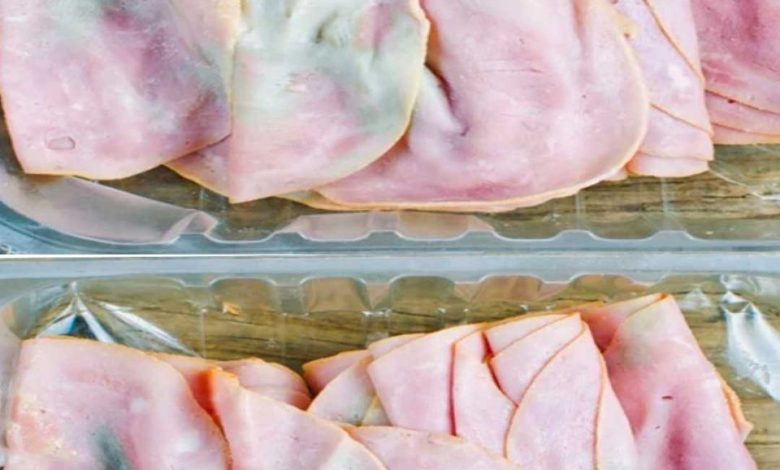Pulled out some deli meat from fridge. My mother-in-law says it’s wasteful not to use it, but it looks bad to me. What should I do?

You open the refrigerator, a package of deli meat in hand. It’s been there a few days, and a nagging question arises: is it still good? Your mother-in-law’s voice echoes in your mind, “It’s wasteful not to use it!” This familiar scenario highlights a common dilemma: balancing food waste concerns with the crucial need to ensure food safety. Navigating this tricky situation requires understanding the factors at play, from shelf life to proper storage, and knowing when to trust your instincts. This article delves into the complexities of dealing with questionable deli meat, offering guidance on making responsible choices for your family’s health.
ADVERTISEMENT
Understanding the Delicate Balance: Shelf Life and Spoilage
ADVERTISEMENT
Deli meats, whether they come pre-packaged from the grocery store or are freshly sliced at the deli counter, possess a finite shelf life. This timeframe is influenced by various factors, including the type of meat, the presence of preservatives, and, most importantly, how the meat is stored. Generally speaking, pre-packaged deli meats, those sealed in their original packaging, will last in the refrigerator for approximately 7 to 10 days after they have been opened. Freshly sliced deli meats, on the other hand, purchased from the deli counter, have a shorter window of freshness, typically lasting only 3 to 5 days. It’s critical to remember that these are general guidelines, and the actual shelf life can vary.
ADVERTISEMENT
Recognizing the Red Flags: Signs of Spoilage
Your senses are your best allies in determining if deli meat has gone bad. There are several key indicators of spoilage to watch out for. These include:
- An Off-Putting Odor: Fresh deli meat should have a mild, characteristic smell. If you detect a sour, rancid, or otherwise unpleasant odor, it’s a strong indication that the meat has spoiled. Don’t hesitate to trust your nose!
- A Change in Texture: Spoiled deli meat often exhibits a slimy or sticky texture. This is a significant departure from the normal, slightly moist surface of fresh deli meat.
- Discoloration: While some slight color variation might occur, significant discoloration, such as the meat turning gray or green, is a clear sign of spoilage.
- Visible Mold Growth: The appearance of any mold, regardless of color, unequivocally signals that the deli meat should be discarded immediately.
The Hidden Dangers: Risks of Consuming Spoiled Deli Meat
Consuming spoiled deli meat poses a genuine risk of foodborne illness. These illnesses can manifest in a variety of unpleasant symptoms, ranging from nausea, vomiting, and diarrhea to abdominal pain and cramping. In more severe cases, food poisoning can lead to hospitalization and even more serious health complications. Certain individuals, such as young children, the elderly, pregnant women, and those with weakened immune systems, are particularly vulnerable to the effects of foodborne illnesses. Understanding these potential health risks underscores the importance of exercising caution and discarding any deli meat that you suspect may be spoiled.
Extending Freshness: The Importance of Proper Storage
Proper storage plays a vital role in maximizing the freshness and safety of your deli meat. Here are some essential tips to keep in mind:
- Refrigerate Promptly: Deli meat should be refrigerated as soon as possible after purchase or opening. The longer it sits at room temperature, the faster it will spoil.
- Maintain Cold Temperatures: Store deli meats in the coldest part of your refrigerator, which is typically towards the back or on a lower shelf. The ideal temperature for storing deli meats is below 40°F (4°C).
- Airtight Containers are Key: To prevent exposure to air and moisture, which can accelerate spoilage, store deli meats in airtight containers. If you don’t have airtight containers, wrap the meat tightly in plastic wrap or aluminum foil.
- Label and Date: Label your deli meat packages with the date they were opened. This simple step will help you keep track of their shelf life and avoid consuming them after they have expired.
Beyond the Bin: Alternative Uses for Questionable Deli Meat
If you’re facing a dilemma with deli meat that looks questionable but hasn’t definitively spoiled, there are a few alternatives to simply throwing it away.
- Thorough Cooking: Cooking the deli meat thoroughly to a high internal temperature can kill any harmful bacteria that may be present. This makes the meat safer for consumption in cooked dishes like casseroles, soups, or omelets.
- Composting: If you have a composting system that can handle meat products, composting is an environmentally friendly way to dispose of questionable deli meat. However, ensure your compost setup is appropriate and that you understand the conditions needed for safe composting of meat.
A Final Thought: Prioritizing Safety and Well-being
The decision of what to do with questionable deli meat involves balancing the desire to avoid food waste with the paramount importance of prioritizing your family’s health and safety. By understanding the factors that contribute to spoilage, recognizing the telltale signs, and practicing proper storage techniques, you can make informed and responsible choices. When in doubt, it’s always wise to err on the side of caution. Trust your instincts, and when it comes to food safety, remember that it’s always better to be safe than sorry. Ultimately, the well-being of your family is the most important consideration.




